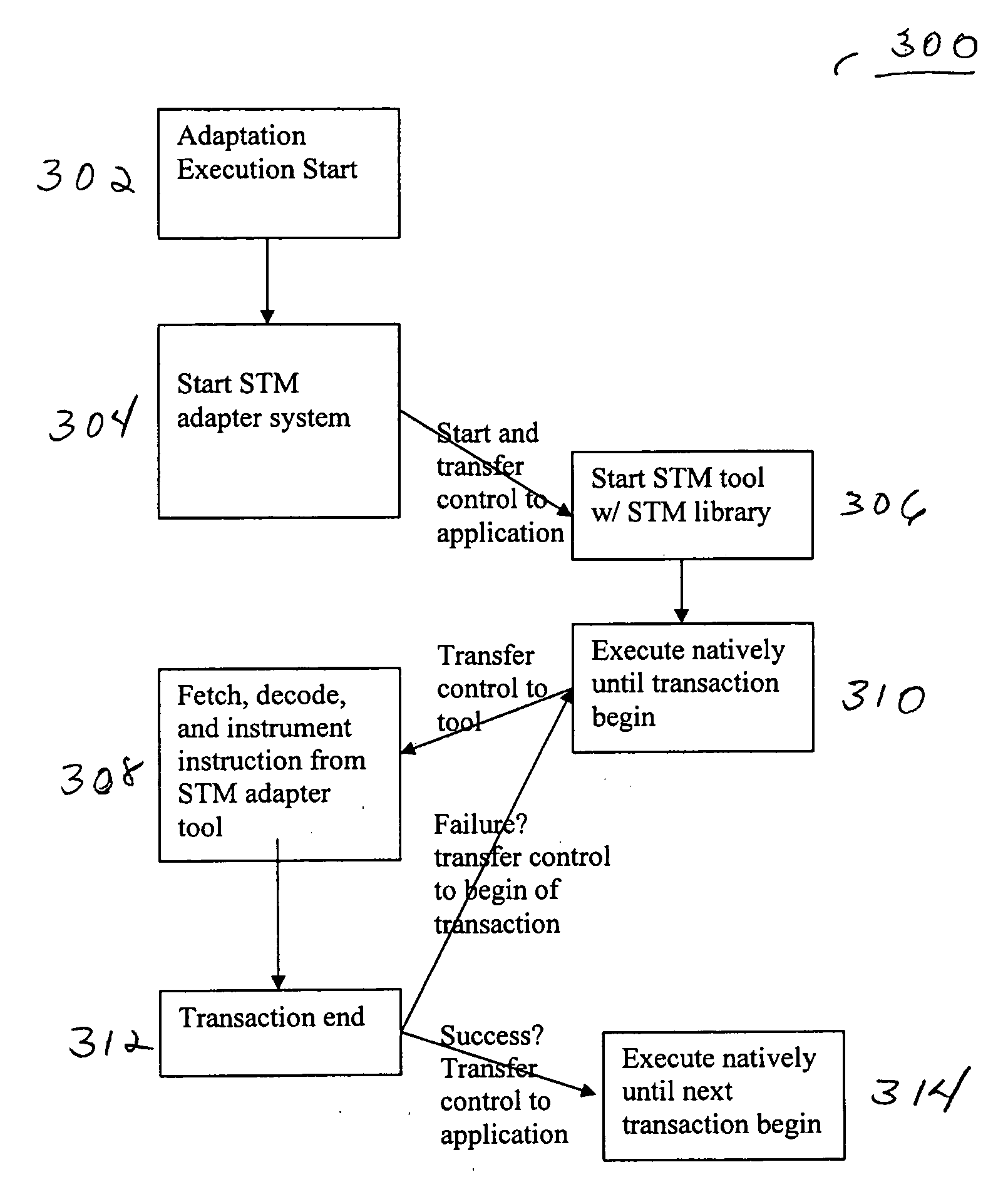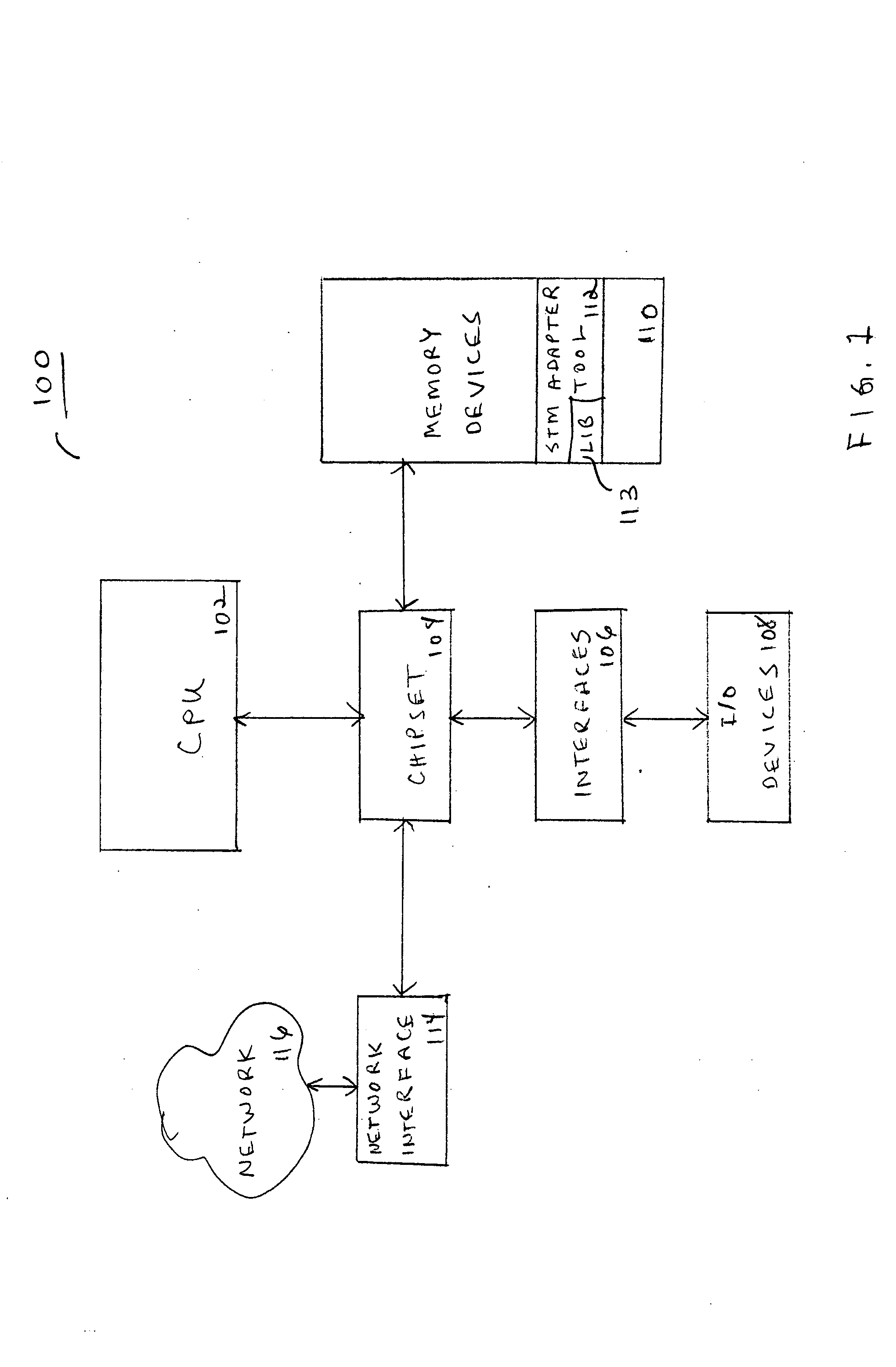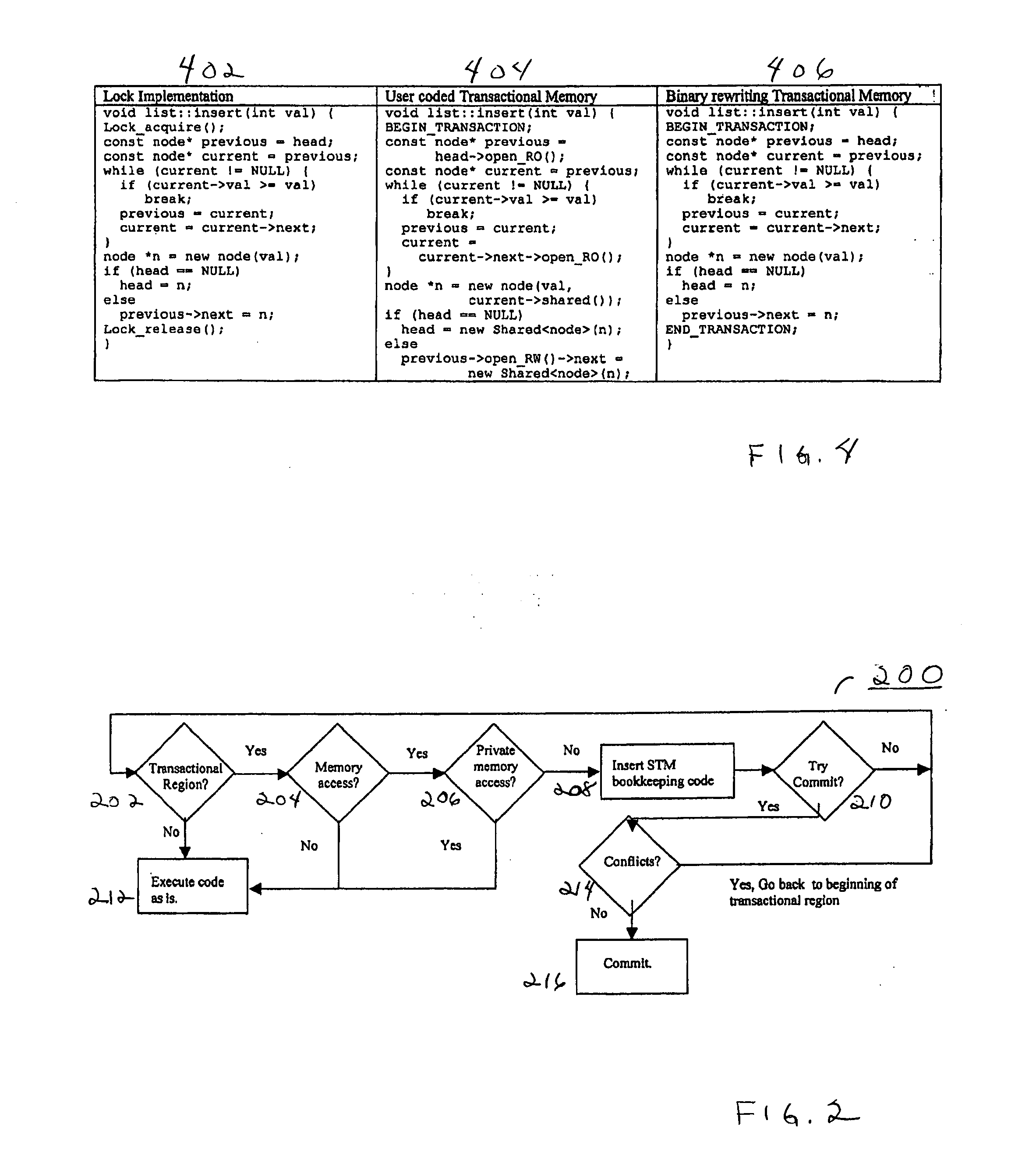Adapting software programs to operate in software transactional memory environments
a software program and transaction memory technology, applied in the field of application programs, can solve the problems of not being able to adapt and stm-predated software code that is usually not well adapted to operate in multi-core, parallel processing systems
- Summary
- Abstract
- Description
- Claims
- Application Information
AI Technical Summary
Problems solved by technology
Method used
Image
Examples
Embodiment Construction
[0010]Embodiments described herein facilitate the use of software transactional memory in non-managed language environments and with legacy codes without requiring a software programmer to change the programming paradigm they are currently used to. Embodiments combine the benefits of transactional memory, such as simpler concurrency protocols, with the familiarity of traditional programming languages. Transactional memory has been shown to often provide significant performance advantages over traditional locking protocols, particularly when code complexity forces programmers to use coarse grain locking. Embodiments allow the straightforward conversion of legacy code to an equivalent transactional memory version that realizes any concurrency benefits that may exist.
[0011]Embodiments described herein combine the benefits of transactional memory (e.g. deadlock elimination, higher concurrency when compared to coarse grain locking) without the need to introduce new language constructs or...
PUM
 Login to View More
Login to View More Abstract
Description
Claims
Application Information
 Login to View More
Login to View More - R&D
- Intellectual Property
- Life Sciences
- Materials
- Tech Scout
- Unparalleled Data Quality
- Higher Quality Content
- 60% Fewer Hallucinations
Browse by: Latest US Patents, China's latest patents, Technical Efficacy Thesaurus, Application Domain, Technology Topic, Popular Technical Reports.
© 2025 PatSnap. All rights reserved.Legal|Privacy policy|Modern Slavery Act Transparency Statement|Sitemap|About US| Contact US: help@patsnap.com



